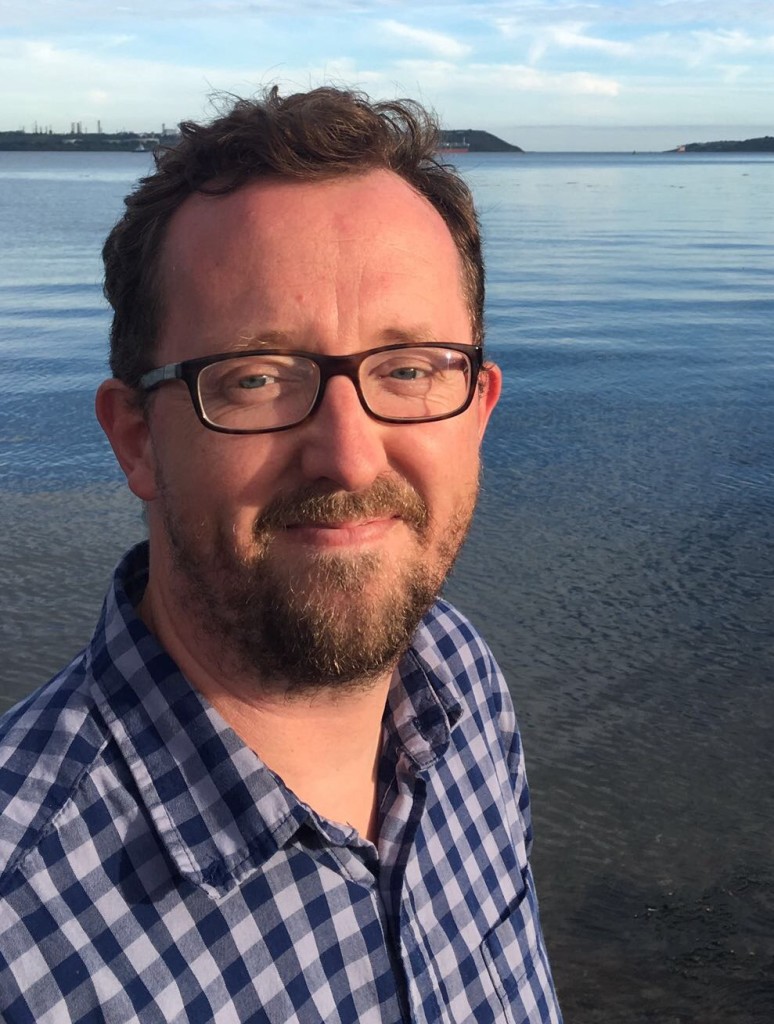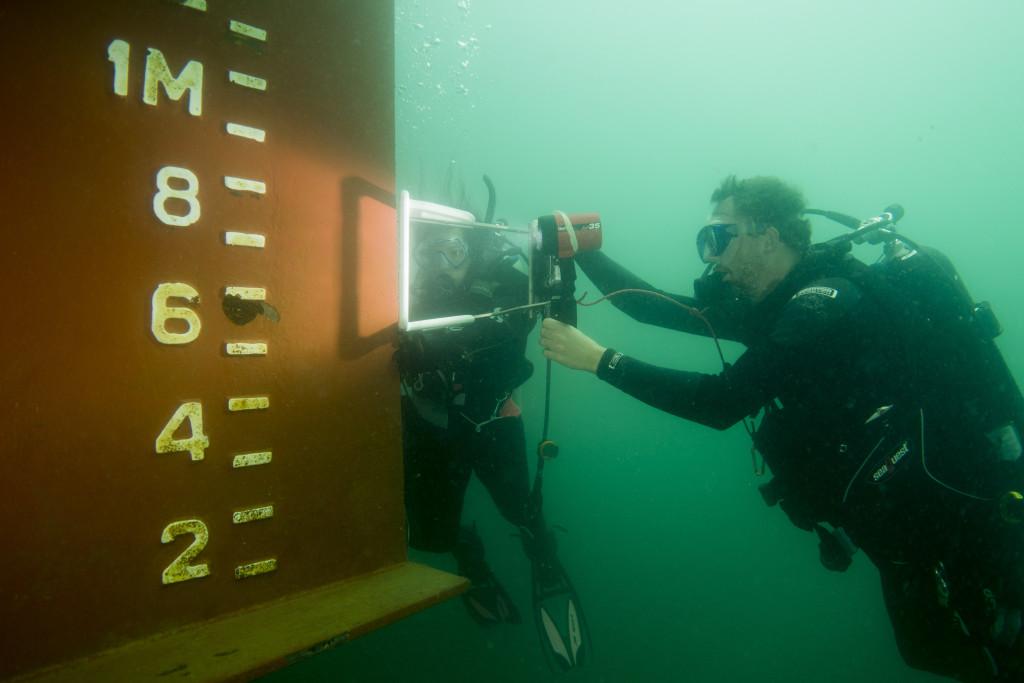by Joe Dawson, science writing intern

Ian Davidson in Cork, Ireland (Credit: Ian Davidson)
Ian Davidson is continuing his work at SERC in a new role: as principal investigator of his own lab. From diving under massive cargo ships to studying an invasive organism ugly enough to be nicknamed ‘rock vomit,’ Ian Davidson looks at how human activities affect marine ecosystems. This includes the methods by which humans transfer marine life around the world (mainly shipping), the effects of coastal development on nearshore environments, and management and policy with regard to marine invasions and organisms.
This is the third of three profiles about the young scientists leading SERC’s newest labs. Edited for clarity and space.
How did you get interested in your area of study?
I grew up in Cobh (pronounced, “Cove”), a small harbor town on the south coast of Ireland, so I had plenty of time in rock pools when I was young. My mother grew up a stone’s throw from the shoreline, right in front of the main shipping channel there, so we were always keeping an eye on the to-and-fro of the port. My dad worked in a shipyard until it closed down too, so I suppose the ingredients were there to pursue a career that heavily featured marine biology and shipping!
Having said all that, I wouldn’t say I went to college thinking I’d end up as a marine ecologist and it might not have been until I learned to SCUBA dive and talked with some really great advisors during my college years that I really wanted to do marine research. In many ways, I fell into this line of work, and much of my good fortune to work in a field that I really enjoy is down to kind and thoughtful people that nudged and supported me in that direction.
What projects are you most excited about?

Ian Davidson (right) sampling organisms from the rudder of a cargo ship with SERC technician Lina Ceballos (left). (Credit: Laurie Penland/Smithsonian Institution)
I work with great people in a wonderful system in Sitka, Alaska, on invasive Didemnum vexillum management (‘rock vomit’), so that’s certainly a favorite. It involves diving surveys and developing ways to control or eradicate D.vex in one bay up there, and the Sitka community is a great one to visit.
What do you wish more people knew about invasive species?
I hope to play a role in informing people about the ubiquity of invasions and what it means for global biodiversity going forward. The main reason invasions matter is because we’re rearranging the biodiversity of the planet, not because a particular species has a certain impact. Of course, impacts matter, but we’ve never had a situation where one species (us) has dominated the dispersal of organisms on this scale.
There’s an opening line from a paper by a famous ecologist – David Tilman – that stuck with me: “The most striking feature of Earth is the existence of life, and the most striking feature of life is its diversity.” Rearranging that diversity is a key aspect of the Anthropocene that contributes to dramatic changes in nature, some of which we are only beginning to understand.
When is your research most fun? Least fun?
Projects that involve field work and a good team of collaborators are great fun. It’s most fun when there are good insights and discussions and outputs from a project. It’s least fun when things get bogged down and progress is slow. Some logistical issues – for example, getting permission to work in ports – are necessary but sometimes stressful and in the “least fun” category. As with most jobs, there are times when it isn’t enjoyable, but on the scale of things, including some jobs I’ve had before, I try to remind myself that I have very little to complain about.
As a conservationist, where does your motivation come from?
There are countless examples of great conservation theory and practice to counteract the major issues of environmental degradation. There’s little point in getting bogged down in any suggestion that negative trends are irreversible or beyond conservation or restoration – we must argue for better approaches, develop them, and demonstrate them.
Meet more of SERC’s new generation of lead scientists:
Q&A: Kim Komatsu, Ecosystem Conservation Ecologist
Q&A: Katrina Lohan, Marine Parasite Hunter

